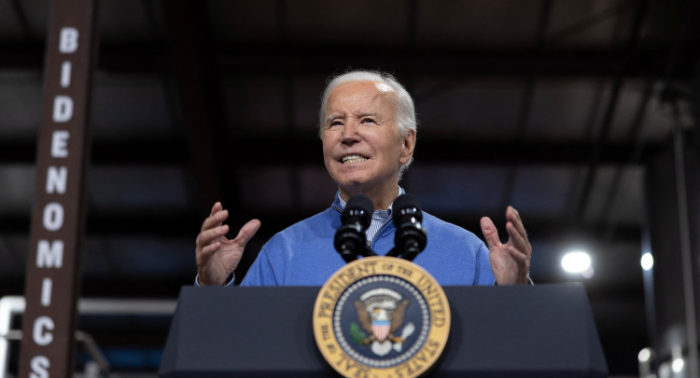In a recent event at a manufacturing facility in Saltillo, a city in northern Mexico, Walter Banegas, a Honduran refugee, skillfully handled a red-hot metal form intended for a street light, removing it from a die-casting machine.
At 28 years old, Banegas recounted his journey, which began as a teenager when he escaped to the U.S. to avoid being conscripted by a dominant drug cartel. However, he was sent back to Honduras in 2014. He attempted to return to the U.S. in 2020 with hopes of claiming asylum but was deported once more.
Facing renewed threats from gangs in Honduras in 2021, Banegas chose Mexico over the U.S. as his refuge. He received refugee status in January and, with support from a U.N. refugee program, moved to Saltillo. There, he secured employment at Pace Industries, a metal casting company headquartered in Michigan, which operates in both the U.S. and Mexico.
Mexico, traditionally seen as a transit or emigration nation, has in the past five years emerged as a popular destination for a modest yet increasing number of refugees. This shift is due to Mexico’s more accommodating asylum policies and the availability of job opportunities stemming from a national labor shortage.
Banegas earns roughly $800 monthly at Pace Industries. While this is less than what he anticipated in the U.S., it allows him to send about $50 each month to his family. He appreciates the camaraderie with his Mexican colleagues and takes pride in his six-month-old son, David, being a Mexican citizen.
“I feel content here,” Banegas expressed. “There’s no need to go to the United States. Progress is possible right here in Mexico.”
A decade ago, Mexico granted asylum to a few hundred people each year. By 2021, this number surged to 27,000, per the Mexican refugee agency’s data. This year, Mexico is poised to approve at least 20,000 asylum requests, mainly from Honduras, Haiti, Venezuela, El Salvador, and Cuba.
Despite this, a significant portion of migrants entering Mexico still head towards the U.S., presenting challenges for the Biden administration. Last year, the U.S. recorded over 700,000 individual asylum applications.
Giovanni Lepri, the chief of the U.N. refugee agency in Mexico, noted that Mexico is increasingly seen as a “very solid option” for refugees, partly due to its substantial labor demand.
As reported by Coparmex, a business association, Mexico has over one million job vacancies nationwide. Sectors like tourism, agriculture, transportation, and manufacturing particularly struggle to find employees.
A Coparmex survey covering over 2,500 companies in July revealed that 85% of manufacturing employers face difficulties in hiring, more so than in any other industry.
The anticipated rise in “nearshoring” – companies relocating to Mexico to be closer to U.S. markets – might exacerbate these labor shortages, as suggested by the Mexican manufacturing association INDEX.
Officials from the U.S., Mexico, and the U.N. have advocated for regional collaboration to facilitate migrants’ resettlement in countries like Mexico, Costa Rica, and Colombia. This approach aims to curtail illegal migration to the U.S.
Arturo Rocha, the migration director at Mexico’s foreign ministry, highlighted the government’s focus on expanding work visa programs and connecting job-seeking migrants with employers, especially to capitalize on nearshoring opportunities.
Mexico is coordinating with Guatemala to bring up to 20,000 workers to Mexico yearly, with plans to extend this program to Honduras and El Salvador.
Jose Medina Mora, Coparmex’s president, commended the U.N. program assisting Banegas and urged the Mexican government to broaden work visa initiatives for faster pairing of migrants with job opportunities.
“This would be beneficial, particularly in light of the current job vacancies we are unable to fill,” he noted.
The U.N. program aids refugees in relocating from southern Mexico, where most complete their asylum process, to cities in central and northern Mexico. It provides financial support and helps with job placements, daycare, schools, and healthcare access. In 2022, the program connected 5,500 refugees with jobs, and nearly 3,000 more have been helped this year.
When Fernando Hernandez, 24, fled Honduras for southern Mexico last year with his partner and young daughter, his initial plan was to quickly cross Mexico to reach the U.S.
However, after seeing social media posts about children drowning at the U.S. border, he reconsidered, fearing for his two-year-old daughter Kaitlyn. He also thought about his mother, who migrated to the U.S. in 2017 and struggled financially in Texas.
Hernandez then decided to apply for asylum in Mexico. Once approved in February, the U.N. helped his family relocate to Monterrey, an industrial city in northern Mexico, where Hernandez began working at a convenience store.
Discovering abundant job opportunities, Hernandez progressed from a factory job to




